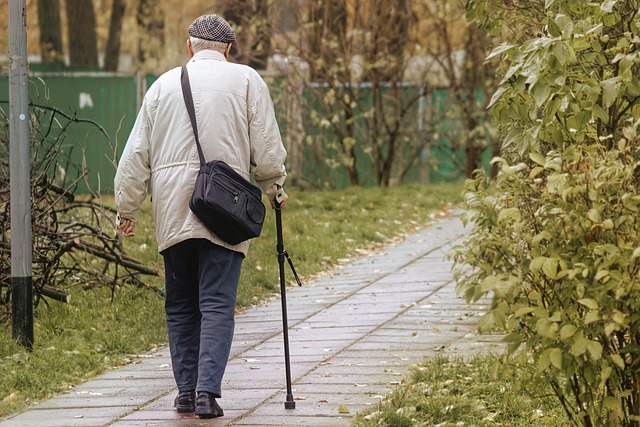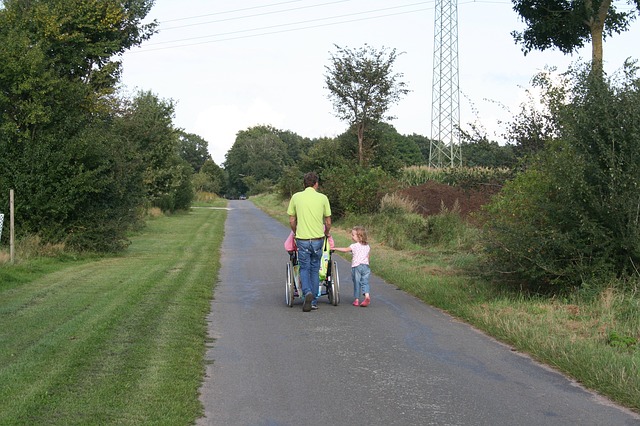Making Progress in Walking Again After a Stroke
After a surviving a stroke, majority of patients will experience difficulty in walking. In fact, stroke is associated with the highest odds of reporting severe disability. Luckily in many studies and researches point out that walking again after suffering a stroke is possible. The Royal Dutch of Physical Therapy Guidelines point out that about 70-80% of patients with a stroke eventually regain the ability to walk independently. To learn more about how long it might take to walk again, check out my other article here.
This article will be a brief guide on how you can learn to walk again after a stroke and make progress while at home. Learning to walk again after a stroke basically means that you will be retraining your brain to understand and master all the necessary steps required to propel your body forward via the bipedal posture.

Prerequisites for Walking
In order for anyone to walk again after a stroke, the following aspects must be present;
- They must be able to weight bear with the affected extremity. (Basically, they must be able to stand and support their body weight on the affected leg.)
- They must also have sufficient balance when standing and when moving.
- They must also be able to control their hip so that they can move their leg forward when walking.
These three aspects are absolutely necessary for there to be any sort of walking. Now for someone who is bedridden this would be what i would focus on at first, but later on in order to improve the walking further and normalize it. The patient must also be able to;
- Independently control knee movement, flexion and extension.
- Develop control of independent ankle movements.
- All these independent movements must be able to be performed outside of the prevalent muscle synergies.
- Integrate all these movements into gait by performing repetitive gait practice.

From the Bed/Wheelchair to Walking
If the patient is bed bound, it would be better to start with a simple short term goal of standing independently. The main aim being to ensure that the patient is able to stand and move the leg forward. To achieve this we will have to create a pattern of exercises and activities to retrain the brain. Retraining the brain will enable the patient to gain the necessary skill required.
Goal
To assist the patient progress from being bed bound to standing the to walking.
To achieve this goal , we will require to implement these interventions;
- Trunk Control Training
- Sitting/Standing Balance Training
- Weight Bearing
- Hip control Exercises
Trunk Control Training
For a patient who is bed bound, our first goal is to ensure that he/she can be able to control the trunk. Getting better trunk control will enable them to easily turn in bed and will help them have more stability when sitting and standing. Various researches have been conducted to assess the benefits of trunk control training in stroke. Most of them conclude that in patients suffering from stroke, there is a strong amount of evidence showing that trunk training is able to improve trunk control, sitting and standing balance and mobility. You can check out these researches here.
To perform trunk control training at home you can do the following exercises;
- Core stability exercises
- lateral trunk rotations
- Sitting unsupported or on an unsteady surface (i.e gym ball)
- Bridges though they can be difficult to perform as you start.
- Sitting up from the lying position
- Practice reaching out exercises while sitting
- You can practice trying to reach objects arms length from you.
- Perform weight shifts
- Rock your body from one side to another
Here is a video expanding on exercises that can help you improve your trunk control after stroke.
Remember that repetition is the key to retraining the brain. Therefore, aim to perform as many repetitions as you can, I normally advise my clients to aim for more than 200 repetitions each day for each appropriate exercise.
Sitting/Standing Balance training
As you continue with the trunk control training you should also start working on the balance when sitting and when standing. Research indicates a relationship between sitting balance and mobility outcomes in stroke. Plainly speaking good sitting balance positively correlates with good walking abilities (gait outcomes).
A simple hack to improve your sitting balance is;
Spend most of your time sitting. Don’t spend all day in bed, or slouched on a comfy sofa. Try to spend most of the time in a seated position, eliminate any extra support if possible. However, your safety should always come first. Eat while seated, watch while seated, talk while seated etc.
Weight Bearing Exercises
Weight bearing is just as straight forward as it sounds. In weight bearing, you’re simply bearing weight on the affected limb. This will prepare the leg so that it can be able to carry your weight as you walk around.
Weight bearing exercises you can perform at home ;
Standing
Find something firm that you can hold on to, then stand for as long as you can, gradually aiming to increase the duration each time your try. When standing, you could lean on the affected side to add more weight to the affected extremity. Have a helper close to you.
Sit to Stand
With someone beside you to help you. Perform a repetition of sitting and then standing. You can hold on to a firm surface when standing from the sitting position. Research has shown that sit to stand helps reduce the risk of fall as well as improve balance and improve muscular strength.
Squats
Squats may sound very challenging, but there is a way you can make it easier.
- You can use to chairs/ stools of different heights. Changing positions from one chair to another will be a form of squat.
- You can also perform a scooting method where you scoot from one side of a bench to the other.
Hip Control Exercises
Gaining hip control should always be one of the priorities for stroke survivors. This is because the hip will be one of the areas you will see an improvement quickly. Gaining some control of the hip movement will further enable some of the stroke patients to be able to walk while utilizing the synergy patterns in stroke.
When performing hip control exercises, you want to learn how to control;
- Hip flexion and extension.
- Hip internal and external rotation.
If you’re unable to perform the exercises, you can change the position and try again the same movement in a gravity eliminated position.
Here is a video with more ideas on performing lower extremity exercises after stroke to improve motor control.